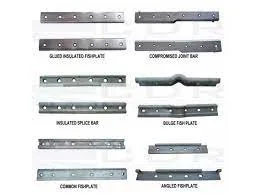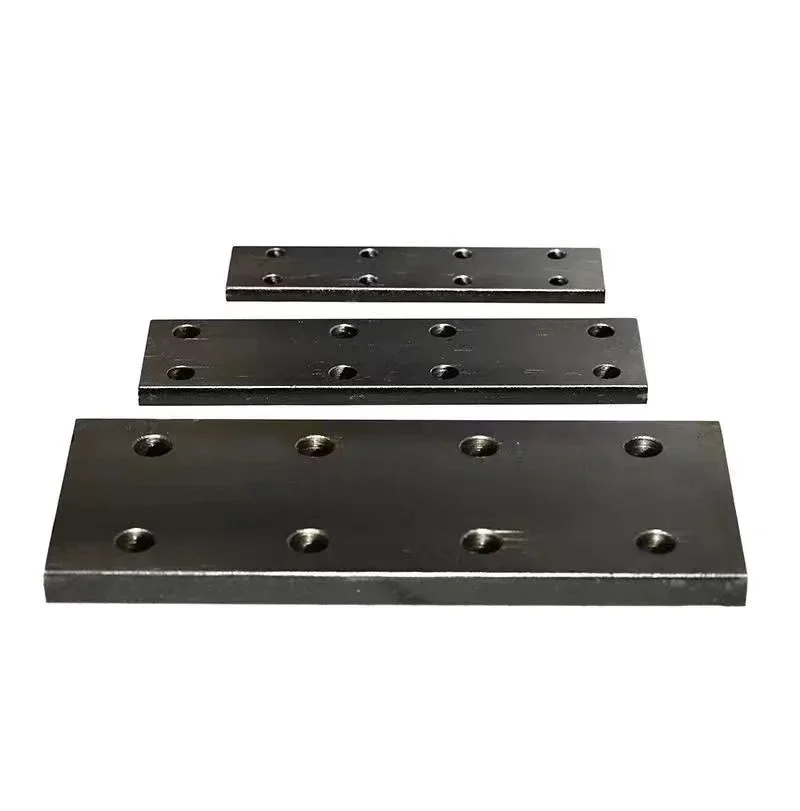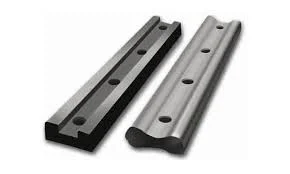Rail joints play a crucial role in maintaining the stability and safety of railway tracks. Among the various types of rail joints, one particular type stands out for its unique design and application - the fishplate. You may be wondering, what exactly is a fishplate? And how does it differ from other rail joint options? In this blog post, we will explore the answers to these questions and dive into the world of fishplates. So fasten your seatbelts (or rather, your reading glasses) as we embark on this journey to discover how a fishplate sets itself apart from the rest!
What is a fishplate?
A fishplate, also known as a splice bar or joint bar, is a metal plate used to connect two sections of railway tracks. Its name derives from its shape, resembling the skeletal structure of a fish skeleton. These plates are typically made of steel and come in various lengths and sizes to accommodate different rail configurations.
The primary function of a https://www.huakesteel.com/Fishplates.html is to provide stability and strength at rail joints. When two sections of tracks meet, the fishplate acts as a bridge between them, ensuring that they remain aligned and securely connected. This connection prevents any gaps or misalignments that could cause derailments or accidents.
Fishplates are designed with holes on each end to allow for bolts or screws to be inserted through them and fastened tightly to the rails. This ensures a strong bond between the rail sections while allowing for some flexibility in expansion and contraction due to temperature changes.
In addition to their structural benefits, fishplates also play an essential role in maintaining track continuity by distributing wheel loads evenly across the joint area. This helps reduce stress on individual rails and extends their lifespan.
Fishplates are an integral component of railway infrastructure, providing vital support at rail joints while promoting safety and longevity within the system. So next time you're traveling by train, take a moment to appreciate these unsung heroes quietly working behind the scenes!

Application scenarios of fishplate
Fishplates, also known as rail joints, play a crucial role in connecting two sections of rails. These metal plates are widely used in various application scenarios within the railway industry.
One common application scenario of fishplates is during track maintenance and repair work. When a section of rail needs to be replaced or repaired due to damage or wear, the use of fishplates allows for a seamless connection between the new and existing rails. This ensures that trains can continue running smoothly without any disruptions.
Another application scenario is in railway construction projects. Fishplates are used to connect different sections of tracks when laying down new railways. They provide stability and strength to the track structure, ensuring safe and efficient transportation.
Fishplates are also used in turnouts or switches, which allow trains to change tracks. In these situations, fishplates help maintain proper alignment and integrity at the junction points, enabling smooth transitions for trains.
Additionally, fishplates find applications in railroad crossings where different types of tracks intersect. By securely fastening the rails together with fishplates at these intersections, they ensure safe passage for vehicles crossing over railway lines.
In conclusion,the versatility and functionality of fishplates make them essential components within the railway industry. Whether it's for maintenance work or new construction projects, their ability to connect rails seamlessly provides stability and safety for train operations.
What are the benefits of using fishplates?
Fishplates, also known as rail joints or splice bars, play a crucial role in the railway industry. They are used to connect two sections of rail together, ensuring a seamless and secure track system. But what are the benefits of using fishplates?
Fishplates provide strength and stability to the rail joint. By firmly connecting the rails, they prevent any movement or misalignment that could potentially lead to derailments or accidents. This enhances safety for both passengers and cargo transportation.
Fishplates help distribute loads evenly across the rail joint. This is especially important in areas where heavy traffic or high-speed trains operate. The even distribution of weight helps reduce stress on the tracks and prolongs their lifespan.
Additionally, fishplates allow for easy maintenance and repair of railway tracks. If there is damage or wear on a section of rail, it can be simply replaced by removing the fishplate and installing a new one without disrupting the entire track system.
Another advantage of using fishplates is cost-effectiveness. Compared to other types of rail joints such as welding or bolted joints, fishplates offer an economical solution without compromising on quality and performance.
Fishplates bring numerous benefits to railway infrastructure including increased safety, load distribution efficiency, ease of maintenance, and cost-effectiveness. Their importance cannot be overstated in maintaining a reliable and efficient railroad network worldwide.

How to install fishplates
Installinghttps://www.huakesteel.com/Exploring-the-Enigmatic-Fish-Plates-Unveiling-the-Secrets-of-Railway-Tracks.htmlis a crucial step in ensuring the stability and durability of railway tracks. Here's a step-by-step guide on how to install fishplates correctly.
First, gather all the necessary tools and materials: fishplates, bolts, nuts, and a wrench or socket set. Make sure they are clean and in good condition before starting the installation process.
Next, position the two rail ends together so that they align properly. Place the fishplate over the joint where the two rails meet. The holes in the fishplate should line up with those on each rail end.
Insert bolts through the aligned holes on both sides of the joint. Tighten them securely using a wrench or socket set. Ensure that all bolts are tightened evenly to maintain balance and prevent any potential issues down the line.
Once all bolts are tightened, double-check their tightness to ensure maximum security. Loose or improperly tightened bolts can lead to track instability and safety hazards.
Inspect your workmanship for any visible defects or irregularities that may compromise track integrity. It's essential to address these issues promptly by adjusting bolt tightness as needed or seeking professional assistance if required.
Remember, proper installation of fishplates is vital for maintaining safe and efficient railway operations. Taking time to follow these steps will contribute significantly to overall track performance and longevity!

Conclusion
Fishplates play a crucial role in the seamless functioning of railway tracks. They are specifically designed to connect two rails and ensure a secure joint that can withstand heavy loads and constant train traffic. Unlike other types of rail joints, such as bolted or welded joints, fishplates offer several advantages.
Fishplates provide flexibility in terms of installation and maintenance. They can easily be attached to existing tracks without the need for extensive construction work or specialized equipment. This makes them cost-effective and time-efficient compared to alternative methods.
Fishplates allow for expansion and contraction of the rails due to temperature changes. As they are not permanently fixed like welded joints, they accommodate slight movements without causing damage or compromising the stability of the track structure.
Moreover, by distributing stress evenly across the joint, fishplates help prevent excessive wear and tear on the rail ends. This prolongs their lifespan and reduces maintenance costs over time.
To install fishplates properly, it is essential to follow specific guidelines provided by manufacturers or industry standards. The process typically involves aligning the rails correctly before bolting the plates securely into place using high-quality fasteners.
Regular inspections should also be conducted to identify any signs of wear or loosening of bolts. If detected early on, necessary repairs or replacements can be made promptly to avoid potential safety risks.
While there are various types of rail joints available in railway infrastructure projects around the world today, it is clear that fishplates offer distinct benefits that set them apart from alternatives like bolted or welded joints.
Liyang Huake Machinery Co., Ltd. is located on the bank of Tianmu Lake, a scenic AAAA tourist attraction. It is mainly engaged in the production and sales of various elevator guide rails and accessories. With professional technology and advanced steel grating production equipment, the company can effectively control the quality and delivery time of raw materials.Our companyattract business with our integrity and offer our custormers the most satisfied service with a sound management system,the best technician and the most stable construction quality.Welcome to inquiry if you need to know more about product details or order wholesale.[email protected]
